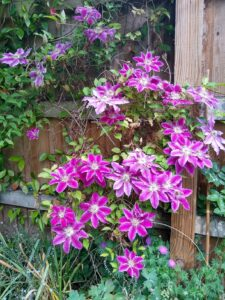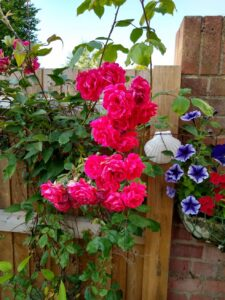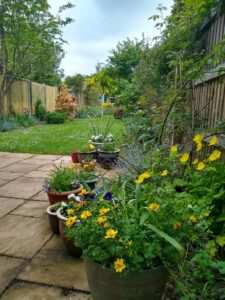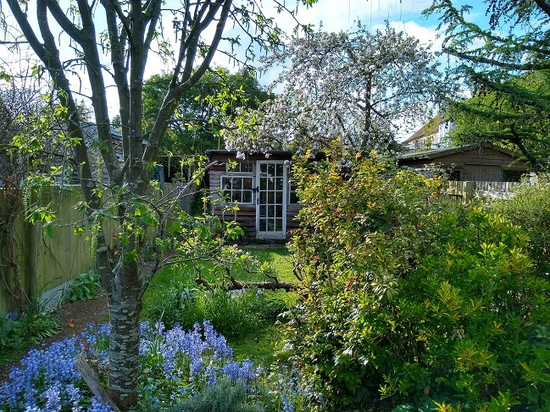Spaces
May 16, 2022 Blog
Space can be scary, which explains perhaps why we go to such great lengths to fill it.
In writing terms, anyone who has ever sat down to compose something will know about the 'tyranny of the blank page or computer screen.' Yet, any writer or composer or artist will also know how important it is to allow that space, and what incredible acts of creativity can come from that place of apparent emptiness. It's a huge step in faith because it's just possible that nothing at all might emerge, but it's a risk that needs to be taken again and again.
The creative process is explored by Ted Hughes in his poem The Thought Fox, where we are given a rich and evocative image of a fox appearing in the still of the night. What is not clear from the completed work is how long Hughes had to sit with the 'blank page' and 'the clock's loneliness', as mentioned in the first stanza, before that fox began to appear and to take form; or if Hughes agonised about whether another word could ever come forth from his pen.
I like to experiment with spaces in my garden. Some years I might cut back shrubs that have become a bit too big and it's fascinating to see the new spaces that are revealed. There are some plants that absolutely demand space around them, two examples being roses and clematises. If other shrubs crowd in on them they will stubbornly refuse to give any flowers but if they are given plenty of space then they will provide their colourful reward in abundance.
Spaces are important in music. A rest in a score gives the opportunity for the singer or player to take a breath or a pause but they serve a far greater function than that. They can add depth and emotion to a piece. They can help to create tension or relieve tension, they can create suspense, they can give emphasis to that which has gone before or to that which will follow. They simply make the music more interesting.
In architecture too it's important to be aware of spaces. Ian White, the former Master of Jesus College, Cambridge, used to say, "It's not the buildings themselves, it's the spaces between them." A curious comment perhaps, especially in view of the particular grandeur and beauty of the buildings of Jesus College. Yet I think his insight is borne out when, for example, coming over a London bridge and spotting the enormous dome of St Pauls. I'm sure that Christopher Wren must have taken into account the spaces around the building, just as much as his masterpiece itself. So too in Canterbury where I live there are strict planning laws concerning both the heights of buildings but also the spaces between them so as to preserver the wonderful views of the Cathedral. In architecture or town planning, just as in literature, sometimes less is more. What is not said can say or suggest something more effectively than what is spelt out. Space also leaves something to the imagination of the viewer or reader or listener. Or it can simply be space, without any need at all to justify itself!
Since the Irish Chaplaincy was founded in 1957 a central part of the ministry has always been listening, whether that was to newly arrived Irish people in Britain or in later years to someone in a prison cell or a care home or living on their own. As Michael Mitton points out in his book A Heart to Listen, "One of the great advantages of listening is that, because it is non-directive, it makes no attempt to steer or influence people." He concludes, "It simply provides space." We will all know how frustrating it can be when we are not listened to well by another person. And we will know how healing it can be when the other person just gives us that space: to talk, to be silent; whatever. I once read a book by a psychotherapist who told of his work with a person who sat at a start of one of their therapy sessions and didn't say anything. The therapist wasn't sure initially how to respond but decided intuitively to simply sit with the person. The whole session went by with nothing being said, so too a second and then a third session. At the end of that third session the person said, "Thank you for just being there with me and for not saying anything." By contrast I once took part in a guided retreat during which there were daily sessions with a retreat guide. My guide was utterly incapable of allowing silence and felt a need to fill any space immediately with some or other pious utterance. After a couple of days of that I had had enough and did not return! Just like the clematises and the roses in the garden, if I am not given space I will stubbornly refuse to co-operate!
When I did some counselling training one of the things I learnt was to listen for what is not said just as much as for what is said. It can speak volumes. And, as suggested above, I learnt of the importance of simply providing the other person with a space in which they might choose to tell their story, or just sit in silence whilst the story gradually takes shape.
And so let us try not to be afraid of spaces, whether they be a blank page or a gap between buildings or plants or a pause in the middle of a conversation. Besides giving form and focus to that which is around them, they can be places of great potential in themselves, and we just never know what creativity or healing, or even nocturnal animals, can emerge from them.






